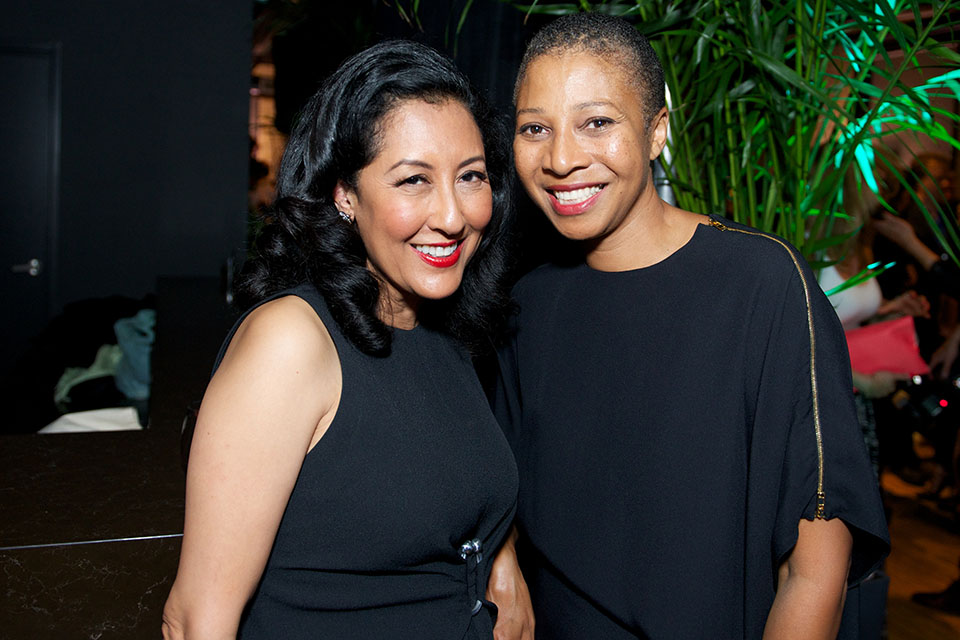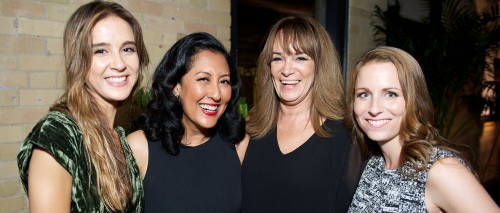From its birth in 2006, The Canadian Alliance of Film & Television Costume Arts & Design (CAFTCAD) has been a home to countless costume designers and commercial stylists. The organization aims to bring together like minds working in costume arts and provide a platform for shared learning and open discussion in the industry.
“I’ve been very impressed and amazed with how CAFTCAD has grown, and how a lot of passionate individuals have contributed an immense amount of their time and energy and love towards making various CAFTCAD events successful,” shares Joanna Syrokomla, CAFTCAD president and costume designer, during a Toronto International Film Festival industry event inside Toronto’s swank Spoke Club. The event is an opportunity for industry and media to check out up close the work that goes into designing elaborate costumes for blockbuster films like Pompeii and popular TV shows like “Reign” and understand the evolution of the industry.

“Costume design, it’s gone beyond just film and television now,” says costume designer and executive on the CAFTCAD board of directors, Antoinette Messam. “We have networks and studios starting to think about how the clothing can brand their network, they’re starting to think about their marketing… It’s not just about characters and helping to tell the story with clothes, now they’re starting to see beyond that as to how can we market this show and take it outside of the screen into retail,” she says, citing Banana Republic’s recent deal with “Mad Men” as an example.
Amongst CAFTCAD’s professional line up is the organization’s vice-president, Loretta Chin, who is a costume designer on reality TV series “Say Yes to the Dress”, stylist and fashion journalist. The fashionista has had her fair share of ups and downs in the costume design industry being a multi-faceted visionary and creative.
WHAT ARE TROUBLES THAT YOU FACE BEING A STYLIST ON A SET? I think there’s always the demand for time and challenge and making sure that you have everything there and right. Sometimes you can fix things, and sometimes there’s a request for something that you don’t have and you either be able to fulfill that request in some other way… The whole thing about being a commercial stylist is there’s the challenges of time, and money and budget, and the demands of asking for things. And in terms of being a stylist in the commercial world, basically what happens is you have lots of different people, you have the client, you have the agency, and you have your director, and those are all people to please and all those people wear clothes and all of those people have an opinion, so you have to be able to have the polities and walk and talk to people in what they see for their brand. If things are challenging you say things with a smile and being able to think on your feet; we problem solve, that’s what we do.
HOW HAS CAFTCAD HELPED YOU IN YOUR CAREER? To be honest, I’ve always been a commercial stylist, and I’ve never done a long format before really, so now through CAFTCAD I’ve met a lot of different people. It was a good form of networking, and I got my first job, “Recipe for Witches”, through Antoinette Messam (executive on CAFTCAD board and costume designer), she recommended me for it and I went for the interview and I got the job. And then from that I worked well with the team, the producers and the production house, and then they asked me to come and do “Say Yes to the Dress”. That was a really big thing for me because as a freelancing commercial stylist you just jump from job to job, the longest you’re in it is from two to 10 days, and this was like, “oh wow,” this is a new format of costume design, there’s a difference between being treated as a costume designer and treated as a stylist in commercials.
WHAT IS THE DIFFERENCE? So as a costume designer there’s more decision making, and in commercial there’s less decision making, because you have all those other people who have their view of what they want, but as a costume designer you set a tone and a vision. If you’re in simpatico with the people that you are working with then that’s cool. It’s only when you’re not is when you have issues.
Words & Photos By. Aliecia Brissett








Comments are closed.